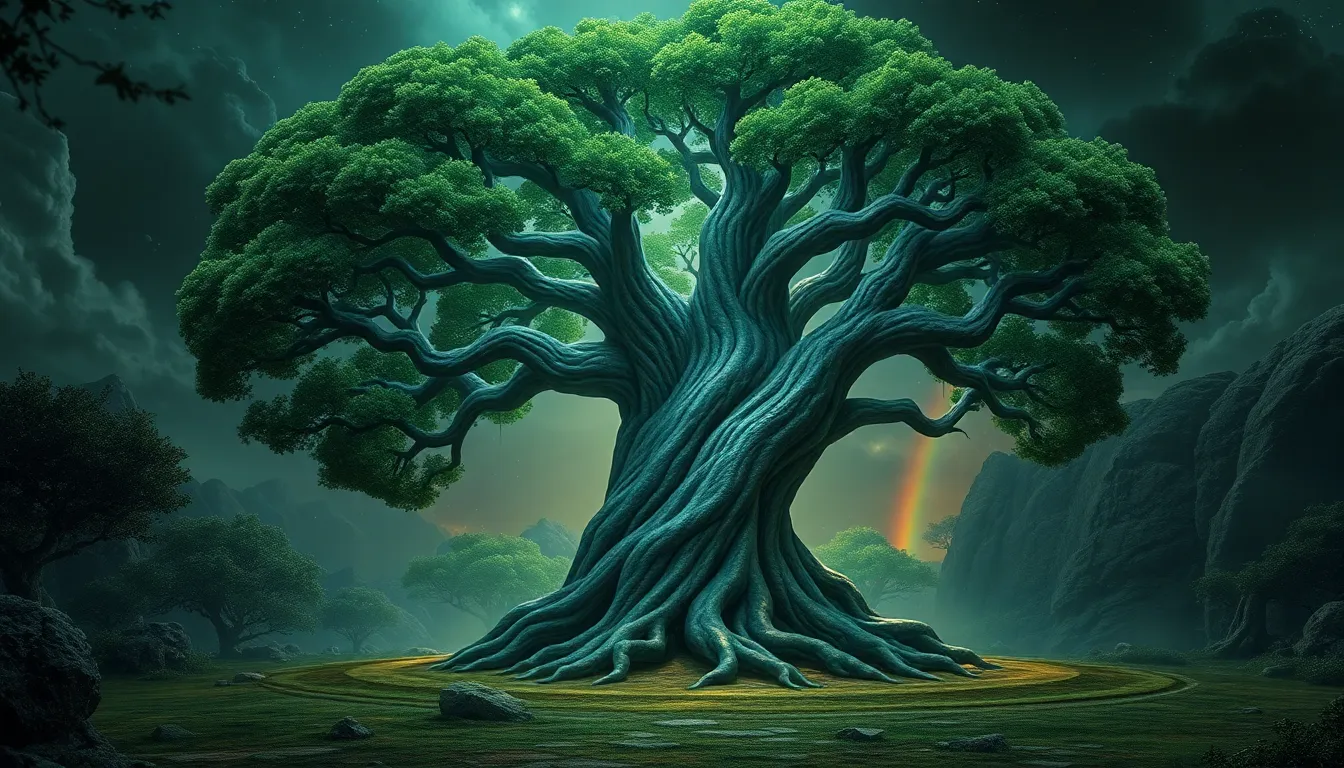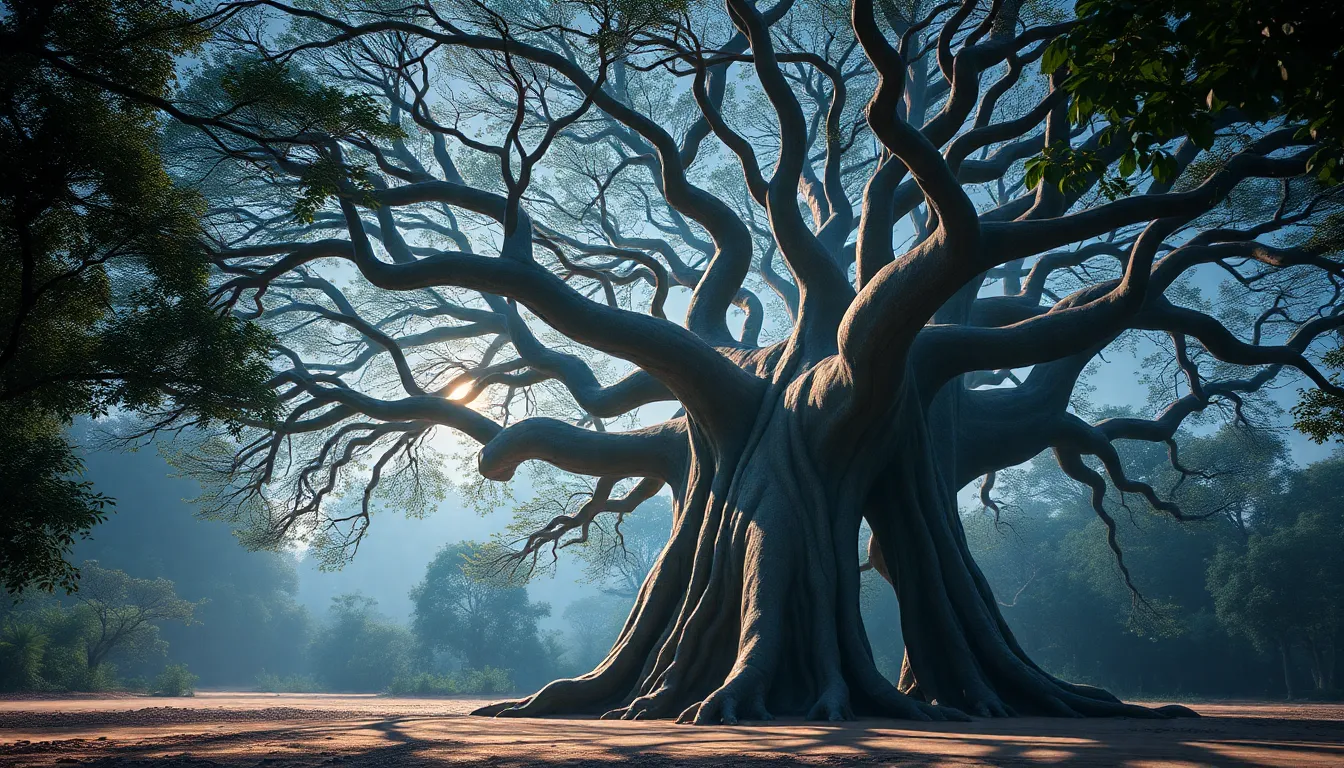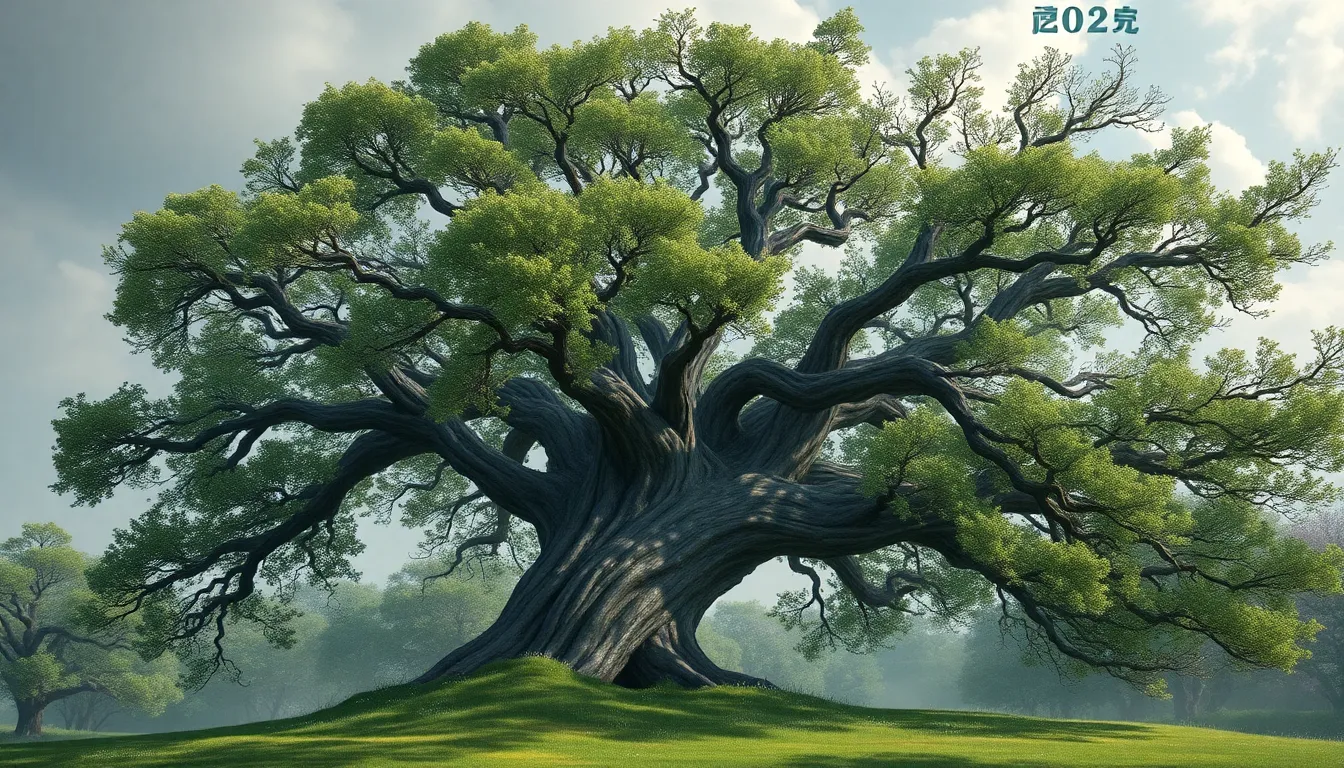The Tree of the Gods: Myths from Ancient Cultures
Introduction to the Concept of the Tree of Life
The Tree of Life is a profound symbol found in various cultures around the world. It represents the interconnectedness of all life and the cyclical nature of existence. Across civilizations, trees have served as metaphors for growth, strength, and the continuity of life. The significance of trees in mythology often reflects humanity’s relationship with nature and the divine.
In many ancient cultures, trees have been seen as sacred entities that connect the earth and the heavens. They often symbolize fertility, knowledge, and immortality, serving as a bridge between the mortal and the divine.
The Tree of Life in Mesopotamian Myths
In Mesopotamian mythology, particularly in the Epic of Gilgamesh, the Tree of Life is depicted as a central element in the quest for immortality. The tree is described as being located in the Cedar Forest, guarded by divine beings. It is intertwined with themes of fertility and the cycle of life and death.
Sumerian culture viewed the tree as a symbol of eternal life, emphasizing the importance of nature in human existence. The tree served as a reminder of the divine connection humans share with the earth, embodying the hope for regeneration and rebirth.
The Cosmic Tree in Norse Mythology
In Norse mythology, the Cosmic Tree, known as Yggdrasil, holds immense significance. Yggdrasil is often described as a massive ash tree that connects the nine realms of existence, including Asgard, Midgard, and Hel. Each realm is distinct, representing different aspects of life and death.
The nine realms connected by Yggdrasil are:
- Asgard – Home of the gods
- Midgard – The realm of humans
- Hel – The land of the dead
- Alfheim – Home of the light elves
- Svartalfheim – Land of the dark elves
- Jotunheim – Realm of the giants
- Vanaheim – Home of the Vanir gods
- Niflheim – The realm of ice and mist
- Muspellheim – The realm of fire
Yggdrasil is not just a physical tree; it is a central element of Norse cosmology, symbolizing the cycle of life, death, and rebirth. Its roots and branches reach into different realms, illustrating the interconnectedness of all beings and the universe.
The Sacred Fig Tree in Indian Traditions
The Bodhi tree, a sacred fig tree, holds deep significance in Indian traditions, particularly in Buddhism. It is under this tree that Siddhartha Gautama attained enlightenment and became the Buddha. The Bodhi tree symbolizes wisdom, compassion, and the potential for spiritual awakening.
In Hindu mythology, trees are revered as embodiments of the universe. The Ashvattha tree, often associated with the cosmic order, represents the eternal cycle of life. The Peepal tree, a variant of the sacred fig, is considered sacred and is often worshipped in various Indian cultures for its spiritual and medicinal properties.
The World Tree in Mesoamerican Cultures
Mesoamerican cultures, such as the Mayans and Aztecs, also have their interpretations of the World Tree. In these myths, the World Tree connects the underworld, the earthly realm, and the heavens. It is often depicted as a ceiba tree, symbolizing the axis mundi—the center of the world.
The concept of the World Tree is rich with symbolism, representing:
- The connection between different realms
- The cycle of life and death
- The sustenance of life through nature
Rituals and ceremonies often involved offerings to the World Tree, highlighting its importance in maintaining harmony and balance between the realms.
The Tree of Knowledge in Judeo-Christian Traditions
In Judeo-Christian traditions, the Tree of Knowledge of Good and Evil is a significant symbol found in the Garden of Eden. This tree represents the moral dilemmas faced by humanity and the consequences of knowledge. Its fruit is often associated with temptation and the loss of innocence.
The implications of the Tree of Knowledge extend into religious teachings, serving as a moral lesson about obedience, free will, and the complexities of knowledge. This narrative parallels various cultural representations of knowledge, where the pursuit of understanding can lead to enlightenment or downfall.
The Tree of Souls in African Mythology
African mythology is rich with stories that highlight the spiritual significance of trees. Many cultures view trees as sacred symbols of life and ancestry. The concept of the ancestral tree is prevalent, representing lineage, heritage, and the connection between the living and their ancestors.
These trees often serve as sites for rituals, ceremonies, and storytelling, reinforcing the importance of community and the continuity of cultural narratives. The spiritual significance of trees in African cultures emphasizes their role in maintaining a connection to the past.
Contemporary Interpretations of Mythical Trees
Modern cultures continue to reinterpret ancient myths, finding relevance in the timeless themes of growth, connection, and the fight for ecological balance. Literature, art, and popular culture often draw inspiration from these mythical trees, highlighting their enduring legacy.
Contemporary interpretations may include:
- Environmental movements that emphasize the importance of trees
- Literary works that explore themes of connection to nature
- Artistic representations that celebrate the beauty and significance of trees
Ecological Significance of Trees in Myths
The myths surrounding trees often reflect a deep understanding of the environment and the vital role trees play in sustaining life. These narratives promote environmental consciousness and highlight the importance of biodiversity and ecological balance.
Trees are often depicted as symbols of resilience, providing shelter, food, and oxygen. The reverence for trees in mythology can inspire modern efforts to protect and conserve natural environments, emphasizing the interconnectedness of all life.
Conclusion: The Enduring Legacy of the Tree of the Gods
The myths surrounding the Tree of Life resonate across cultures, reflecting universal themes of growth, connection, and the quest for understanding. As we explore these narratives, we are reminded of the importance of preserving cultural wisdom and ecological knowledge in today’s rapidly changing world.
The Tree of the Gods serves as a powerful symbol, urging us to recognize our place within the web of life and to honor the stories that connect us to our ancestors and the earth.



